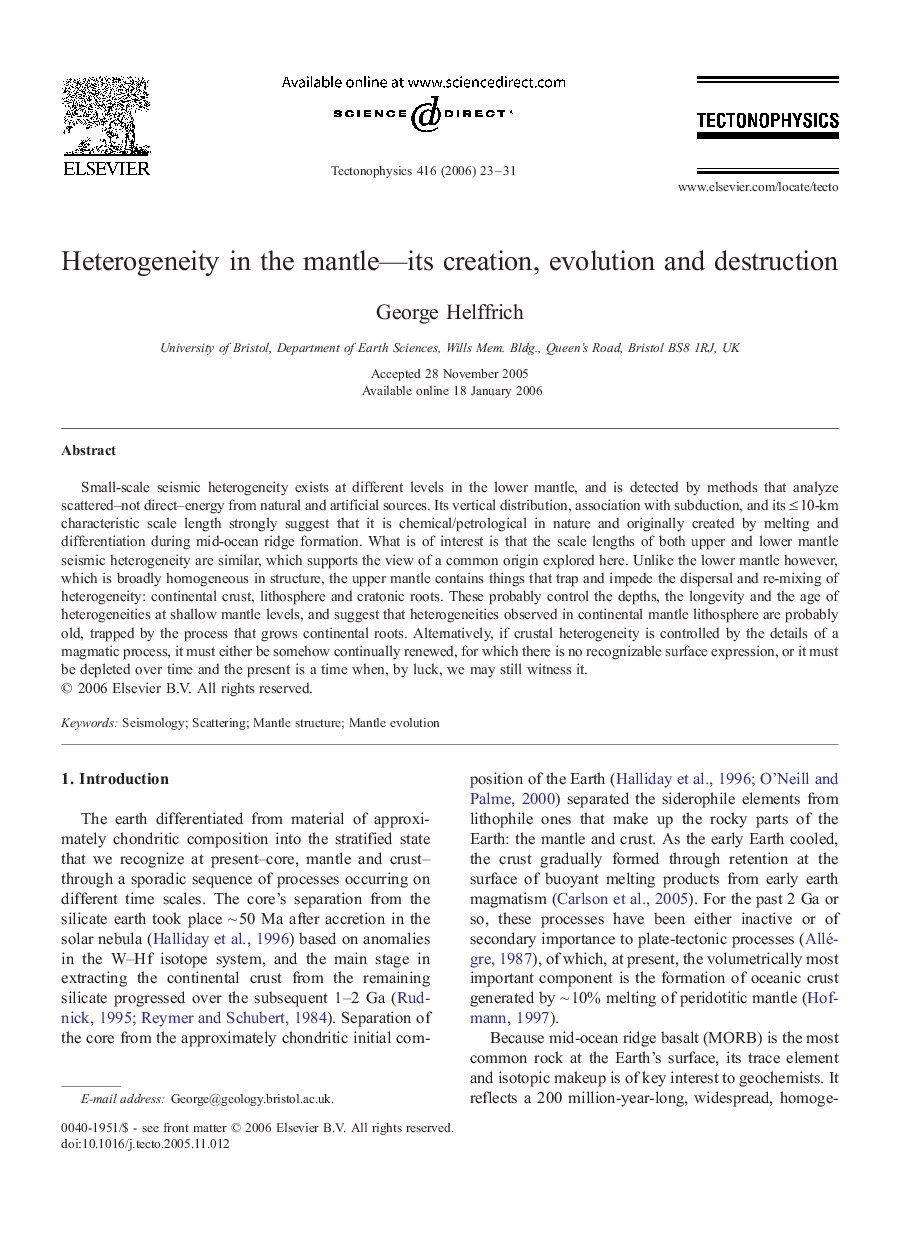| Article ID | Journal | Published Year | Pages | File Type |
|---|---|---|---|---|
| 4695292 | Tectonophysics | 2006 | 9 Pages |
Small-scale seismic heterogeneity exists at different levels in the lower mantle, and is detected by methods that analyze scattered–not direct–energy from natural and artificial sources. Its vertical distribution, association with subduction, and its ≤ 10-km characteristic scale length strongly suggest that it is chemical/petrological in nature and originally created by melting and differentiation during mid-ocean ridge formation. What is of interest is that the scale lengths of both upper and lower mantle seismic heterogeneity are similar, which supports the view of a common origin explored here. Unlike the lower mantle however, which is broadly homogeneous in structure, the upper mantle contains things that trap and impede the dispersal and re-mixing of heterogeneity: continental crust, lithosphere and cratonic roots. These probably control the depths, the longevity and the age of heterogeneities at shallow mantle levels, and suggest that heterogeneities observed in continental mantle lithosphere are probably old, trapped by the process that grows continental roots. Alternatively, if crustal heterogeneity is controlled by the details of a magmatic process, it must either be somehow continually renewed, for which there is no recognizable surface expression, or it must be depleted over time and the present is a time when, by luck, we may still witness it.
